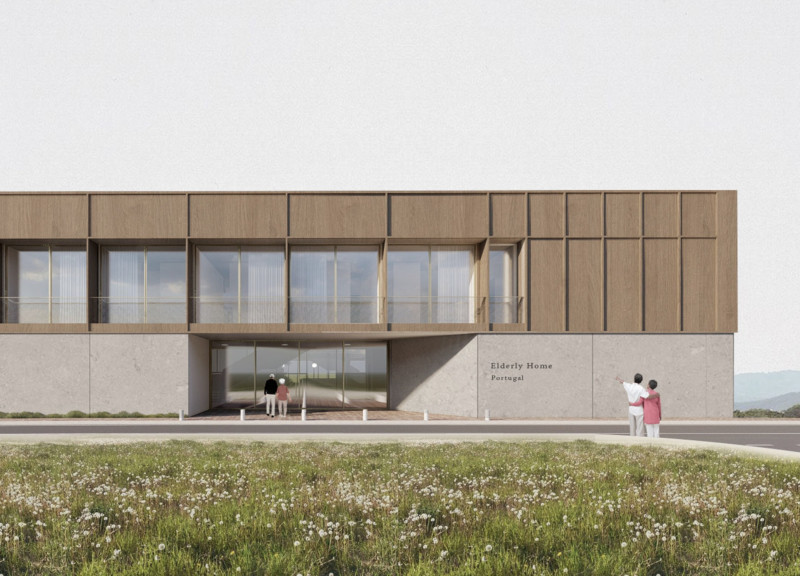5 key facts about this project
From a functional perspective, the design serves as a comprehensive facility tailored for elderly residents, incorporating essential amenities that cater to their daily living needs. The layout includes a mix of shared communal spaces and private living quarters, ensuring that residents have various options for social interaction and personal retreat. The project thoughtfully integrates common areas such as dining rooms, activity spaces, and lounges, where residents can engage in activities and connect with one another. The design also features well-defined residential units, each equipped with essential amenities, allowing for comfortable living while maintaining individual autonomy.
One of the standout features of this project is its careful attention to the surrounding natural landscape. The architects have skillfully designed the building to promote a strong connection to nature, incorporating outdoor spaces and large windows that invite natural light into the interiors. This not only enhances the overall aesthetic but also contributes positively to the emotional well-being of the residents. The greenery surrounding the facility is incorporated into the design, allowing residents to enjoy serene views and engage with the outdoors.
The use of materials throughout the construction is both functional and considerate of the project's context. The building features a combination of concrete and laminated timber, striking a balance between structural stability and warmth. Concrete provides a durable base, while the timber adds an element of comfort and familiarity. The extensive use of glass enhances the transparency of the design, fostering a seamless transition between indoor and outdoor environments. This thoughtful approach to material selection plays a significant role in shaping the atmosphere of the elderly home, creating spaces that feel inviting and safe.
Unique design approaches are evident in the project's layout and spatial organization. The architects have intentionally included dynamic and flexible spaces that can adapt to changing needs and preferences of the residents. Different zones within the building provide a variety of experiences, from tranquil corners for reflection to lively areas for socialization. This adaptability ensures that the facility can evolve over time, responding thoughtfully to the aging population's requirements.
The architecture of the elderly home is not only focused on providing shelter; it represents a deeper understanding of communal living and the importance of fostering relationships among residents. The design encourages social interaction without compromising individual privacy, which is vital for the residents' overall comfort. By incorporating spaces that promote inclusion and engagement, this project effectively addresses the unique challenges of elderly care.
For those interested in delving deeper into this architectural project, exploring the various architectural plans, sections, and designs will provide a comprehensive understanding of the intricate ideas and considerations behind this thoughtful design. This elderly home stands as a testament to how careful architectural planning can influence the quality of life for its residents, emphasizing the importance of designing spaces that truly serve their inhabitants.


























